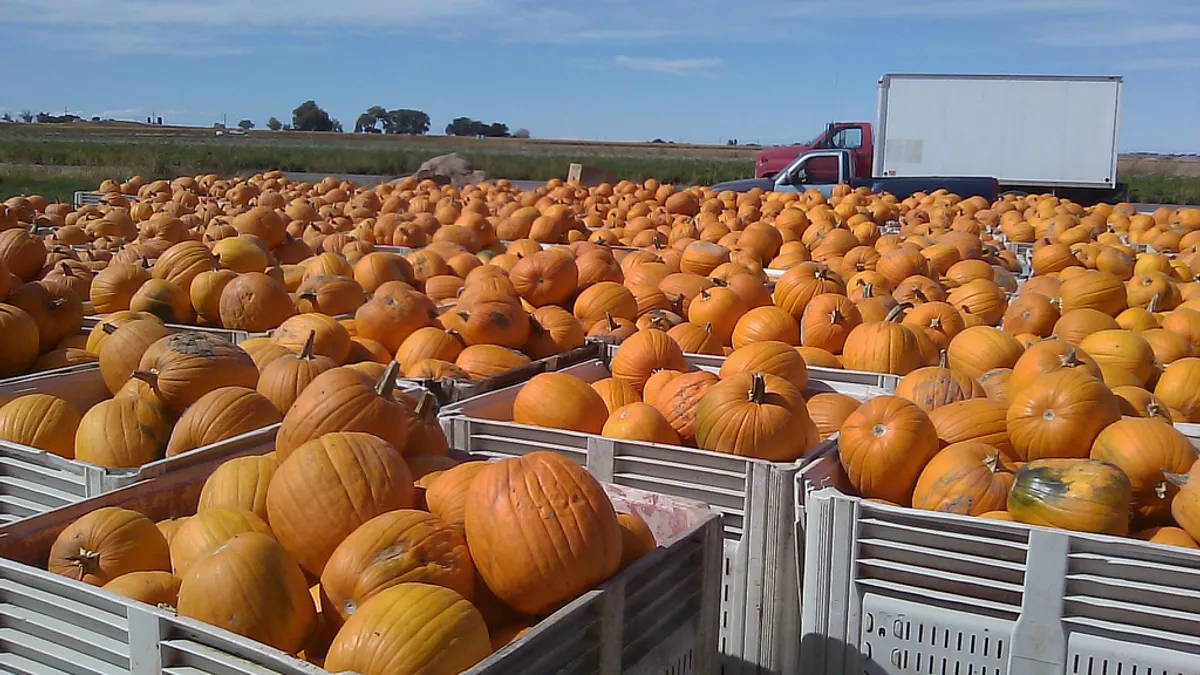Cinnamon, nutmeg, ginger, cloves and allspice.
Alone, they can be used to improve baking. Together, they become that super-flavor of fall: Pumpkin spice.
According to Nielsen, pumpkin-flavored products are a business worth $361 million a year. The statistic is easy to believe, considering the flavor can be found in cookies, marshmallows, cakes, yogurt, gum, waffles, oatmeal, ice cream, and even beer. Its uses as a flavoring are really only limited by manufacturers' imaginations.
According to Diana Kelter, a foodservice analyst for Mintel, the market for pumpkin spice beverages has grown by 130 percent since 2006. Its use in foods has increased ten-fold since 2004.
But why is it that when the leaves start to fall, consumers and manufacturers go ga-ga for gourds?
Festive fall memories
Pumpkin spice mania is fairly new, but the flavor itself is not. It made its debut back in 1966 when McCormick combined the spices often used in pumpkin pie into a single mix.
Some say the Starbucks’ Pumpkin Spice Latte, which debuted 13 years ago, is the reason the food industry has become so pumpkin-spice obsessed. The flavor blend has spread throughout food and beverage, from beer to cereal to yogurt.
“Pumpkin spice has truly remained a seasonal ingredient, which builds increased anticipation for it,” Kelter, wrote in an email. “Pumpkin spice puts us in the mood to celebrate and gear up for the festivities ahead.”
The short amount of time that products featuring the spice blend are on sale may also drive sales. While other traditional fall flavors like apple and sweet potato are featured in products sold all year long, pumpkin-spiced pickings are only available in the autumn. This year, they started appearing in mid-August, and many of them will disappear after Halloween.
Still, shelf scarcity doesn’t explain why pumpkin spice has become more popular than other fall or holiday flavors. The flavor takes over grocery shelves each fall. At Trader Joe’s, more than 60 products this year -- ranging from corn chips to cold-pressed juice to mochi -- feature the spice blend. People magazine assembled a roundup of pumpkin spice products available in other grocery stores, including Cheerios and Triscuits.
According to 2008 statistics from NPD Group, pumpkin pie is the second most popular in the U.S. -- just behind apple pie. However, pumpkin pie is only eaten during the fall and winter holidays, while apple pie is consumed all year long. This could give consumers a continual nostalgic tie-in for the pumpkin spice flavor. Its limited availability also could mean consumers don’t take it for granted, like they might with apple pie.
Pumpkin spice vs. ‘real pumpkin’
“How consumers perceive pumpkin continues to evolve, however,” Kelter wrote. “Consumers increasingly have a demand for ‘real pumpkin’ versus artificial flavors, and they also have an increased awareness for when pumpkin naturally folds into a dish versus when it's simply being added for marketing.”
She said this consumer awareness might result in fewer product categories for pumpkin to expand into. However, traditional categories for pumpkin spice, like coffee, baked goods and beer, continue to attract consumer interest.
In our pumpkin-spice-crazed society, one thing is clear: Manufacturers that don’t provide a pumpkin spice product risk missing out on a lucrative fall offering.
Not just tasty
The components of pumpkin spice have many health benefits that manufacturers of the products can promote, making it more than a flavor. These include:
-
Cinnamon as a blood sugar stabilizer
-
Ginger as an anti-inflammatory and cancer preventative
-
Nutmeg as a digestive aid, sleep aid and Alzheimer’s disease preventative
-
Allspice as an antioxidant and infection preventative
-
Cloves for arthritis relief, as an antioxidant, as a digestive aid, and as an inflammation reducer
Will the trend ever turn into a pumpkin?
While many manufacturers have jumped on the pumpkin spice bandwagon, it is hard to predict if its meteoric success will continue to rise. Still, current demand doesn’t seem to be waning.
According to Nielsen, 37% of consumers purchased a pumpkin spice flavored product last year, up 80% since 2011. A 2015 Forbes article projected that Starbucks alone would see $100 million in revenue from its Pumpkin Spice Latte last year. Other manufacturers of pumpkin spice flavored foods can also expect a dramatic increase in sales.
Market analysts expect the popularity of pumpkin spiced offerings to continue, for the next several years anyway. Its flavor brings out the best of fall, and the spice can easily be adapted to each manufacturer’s product. It’s one of those ingredients that can’t help but boost the bottom line of any company that adds it to the mix.





